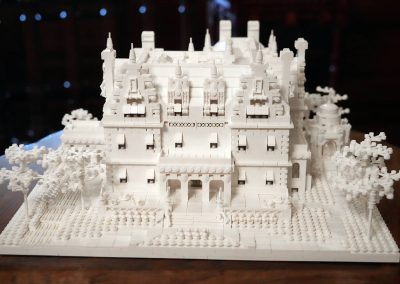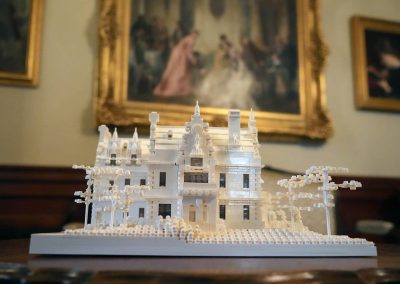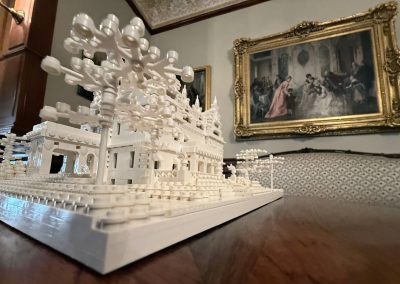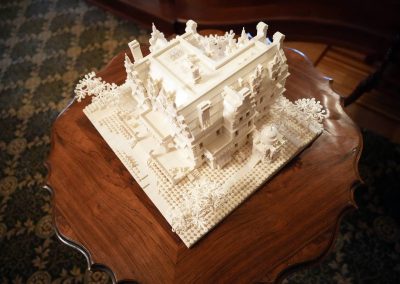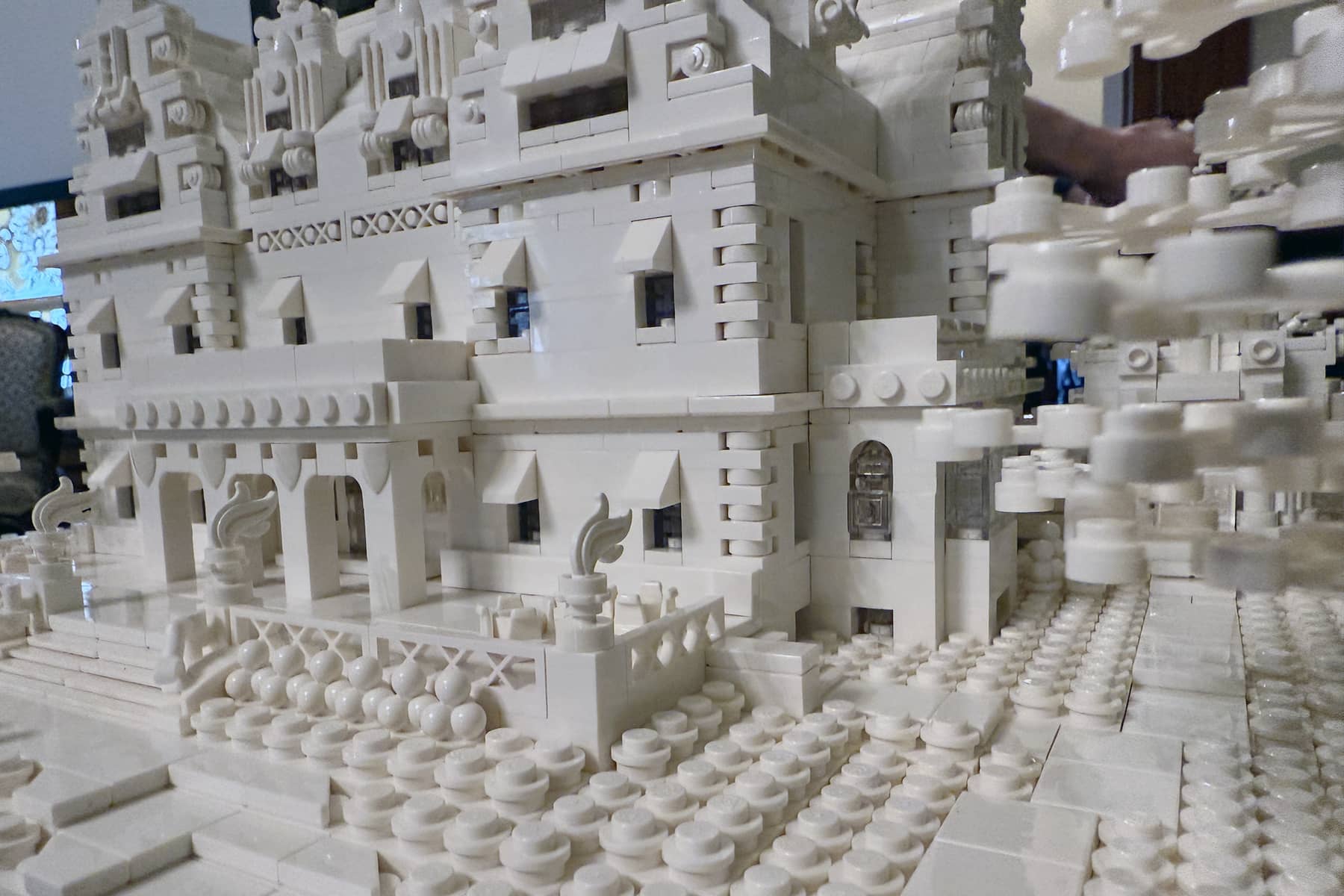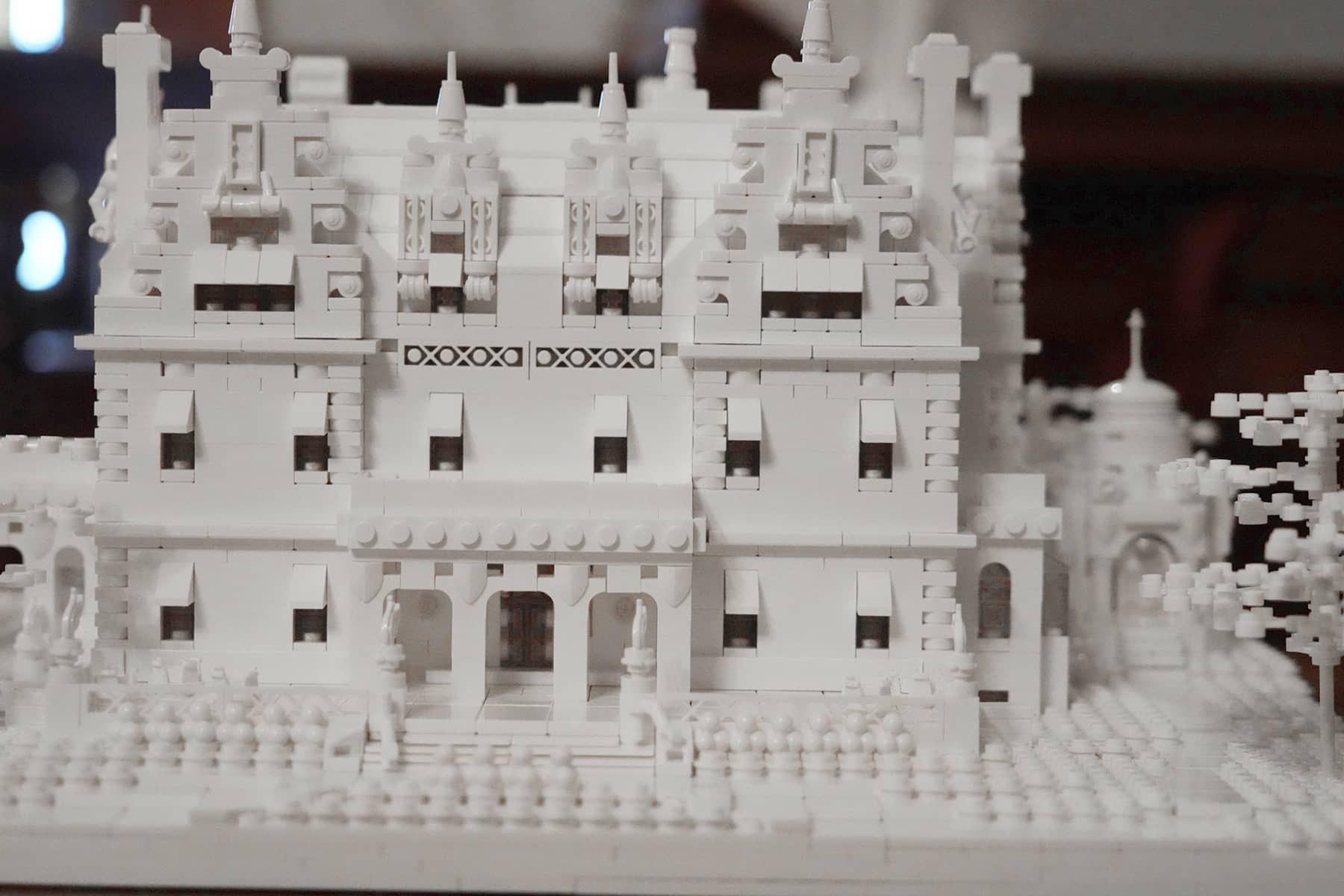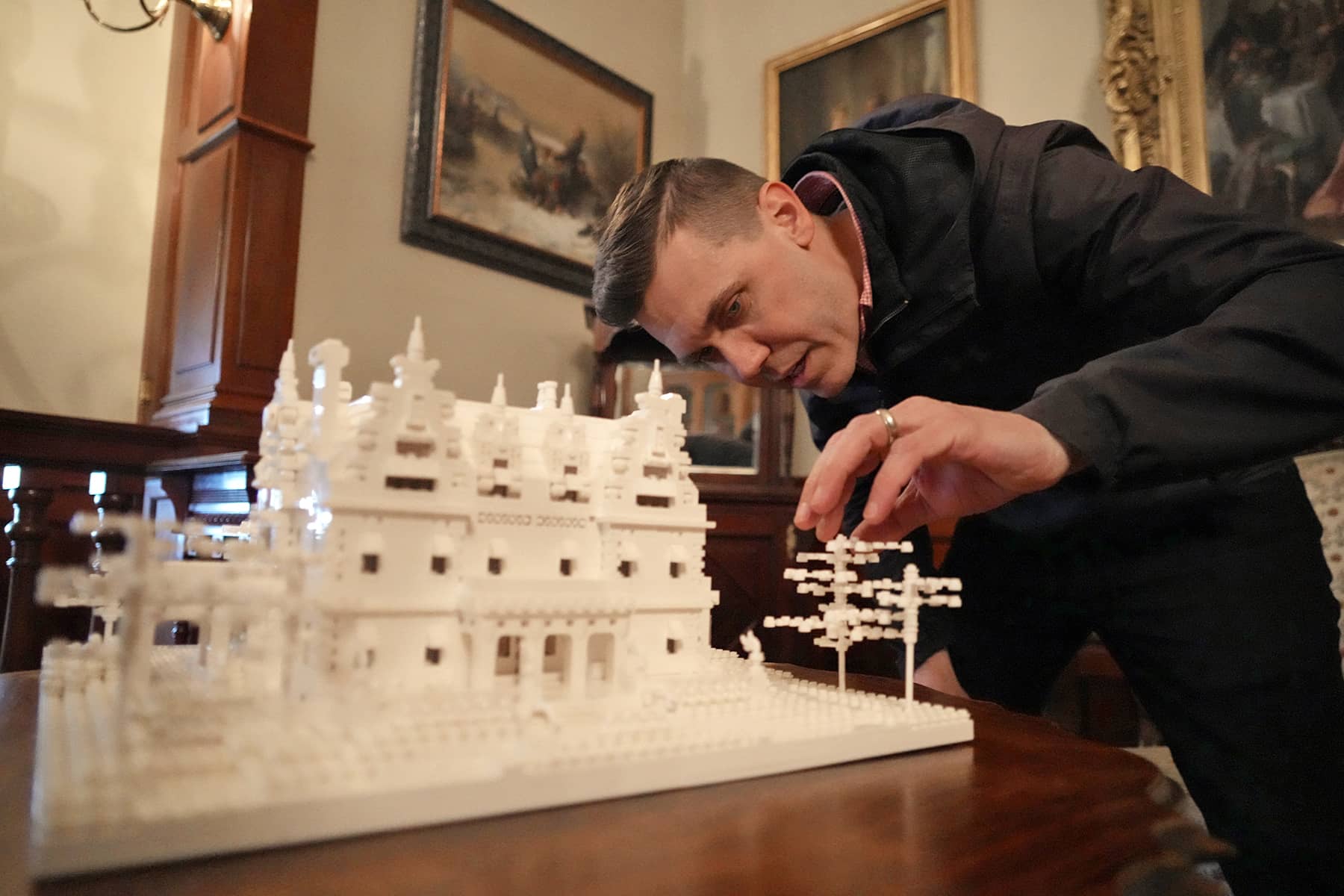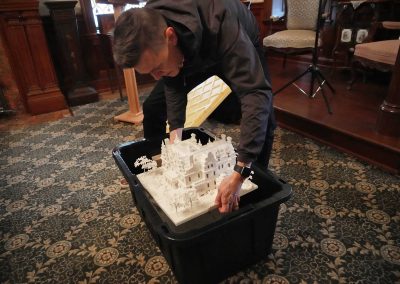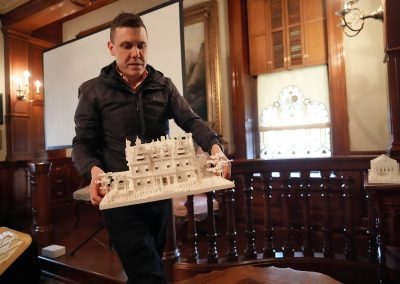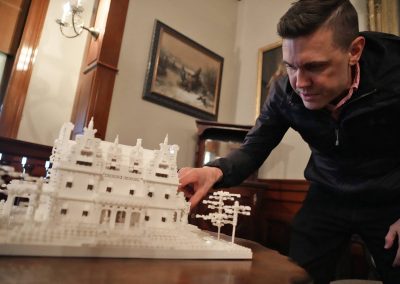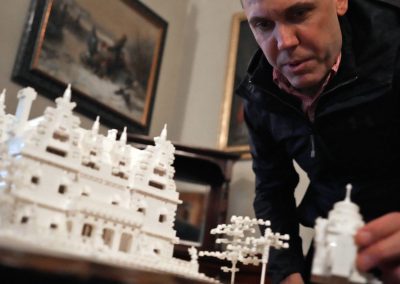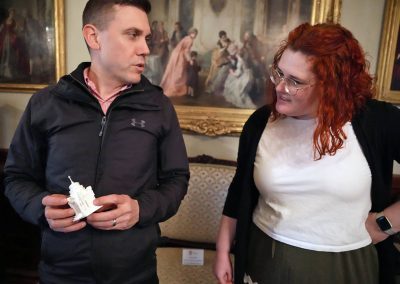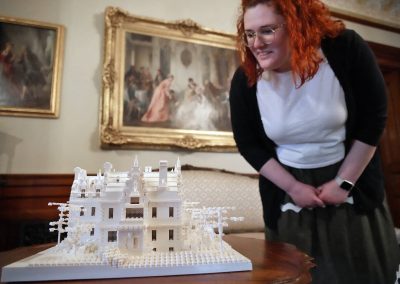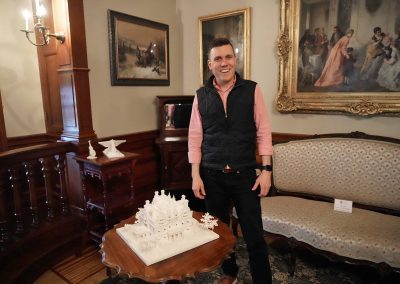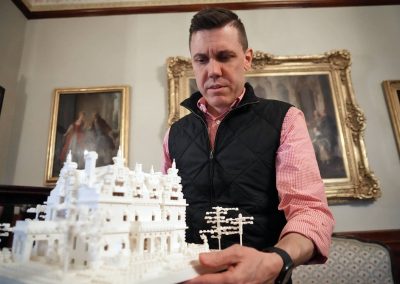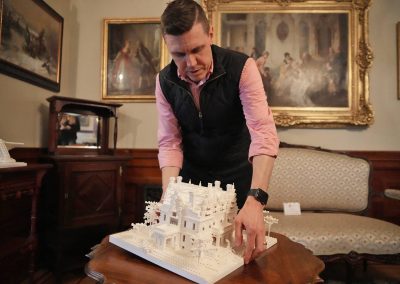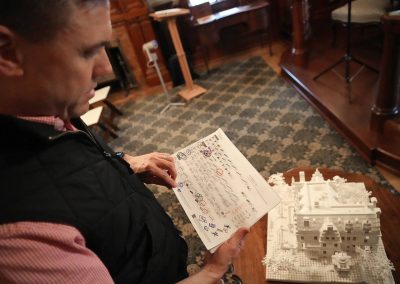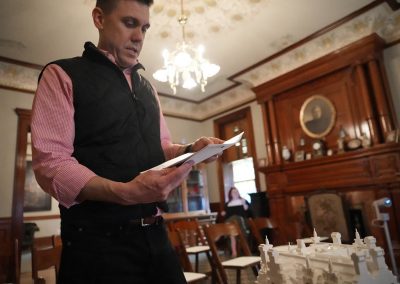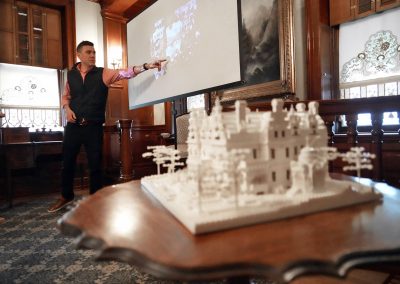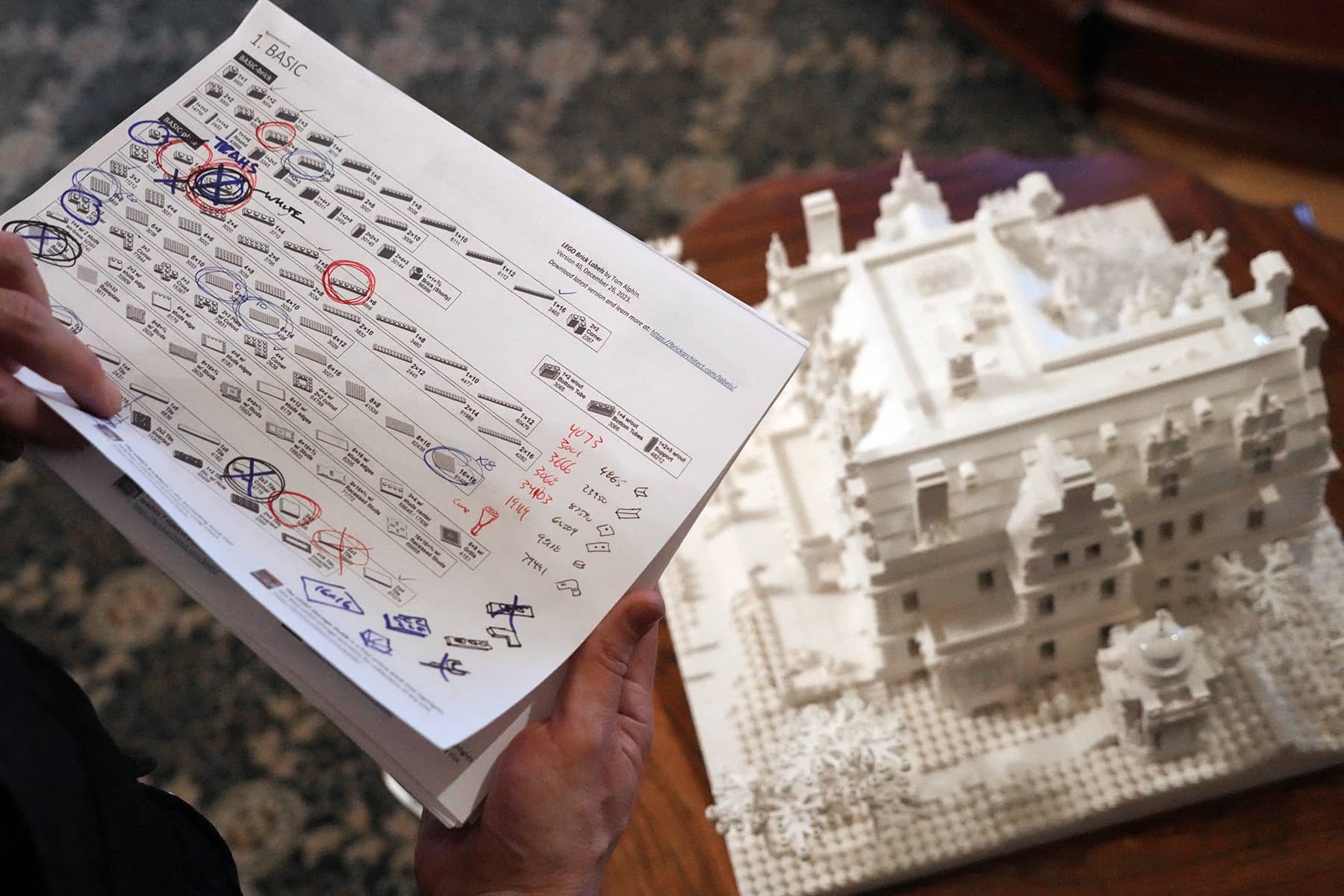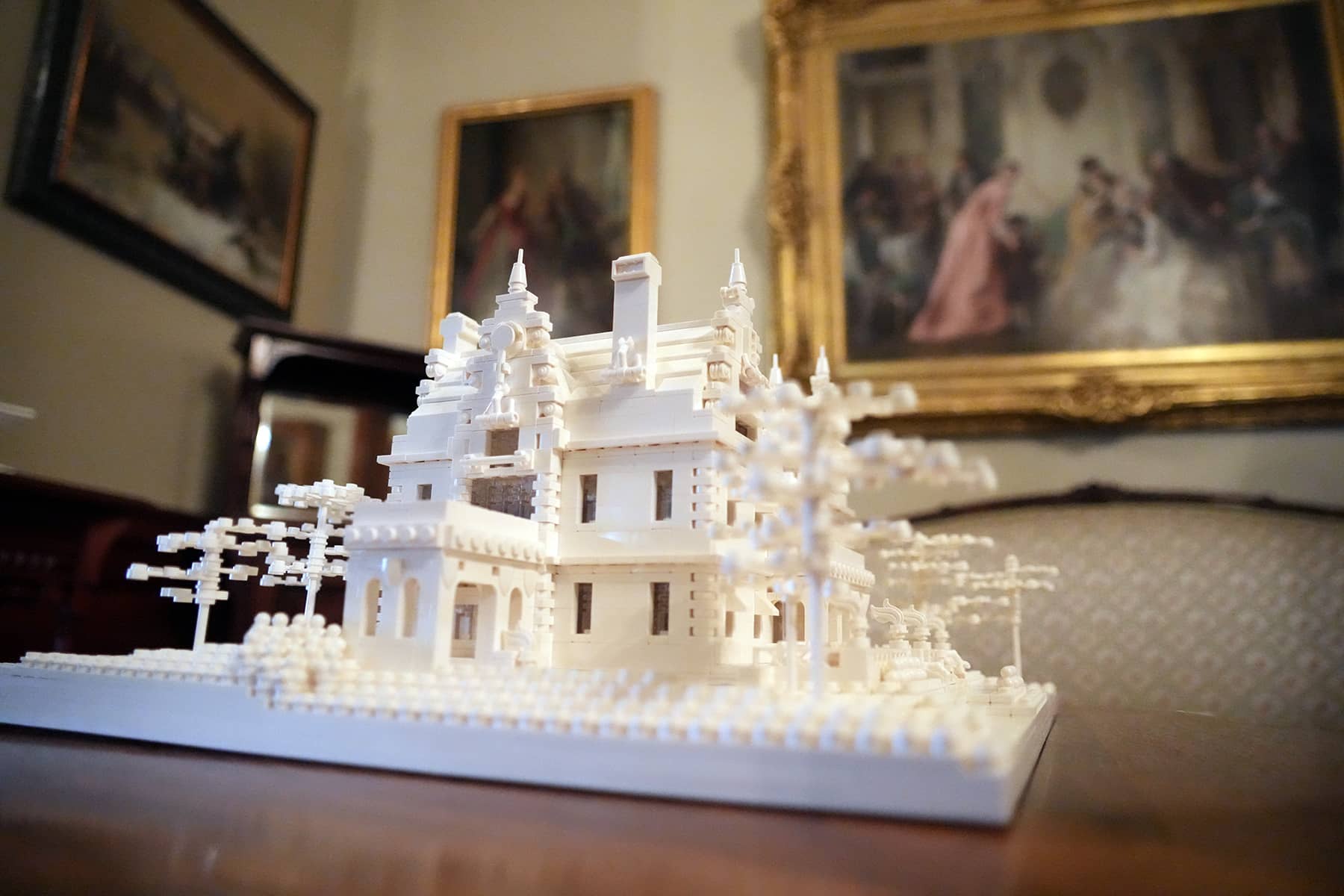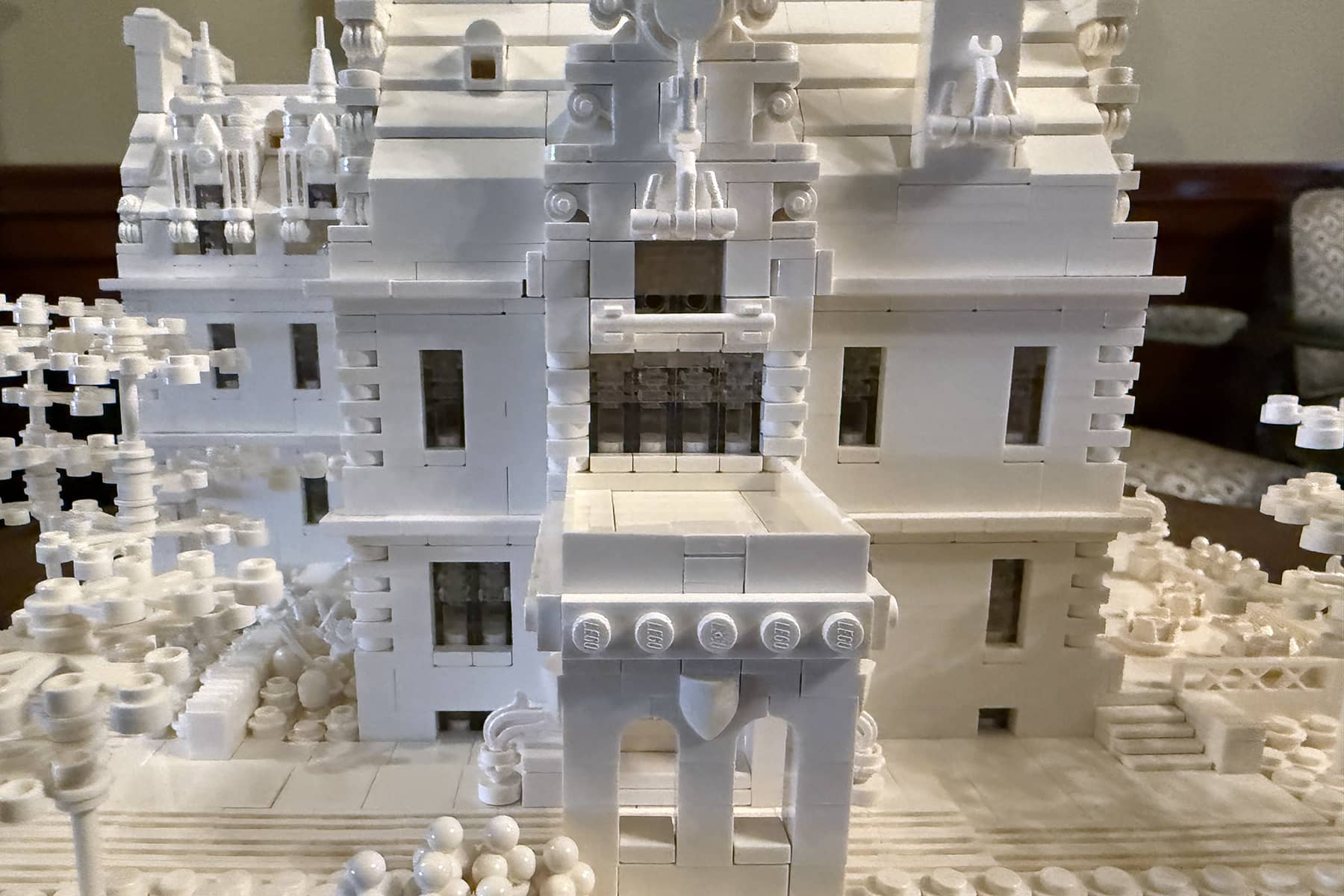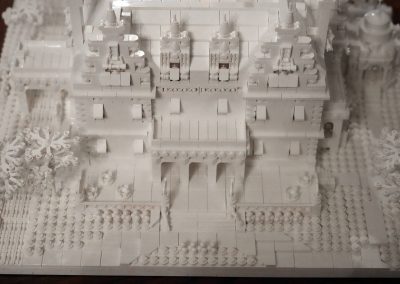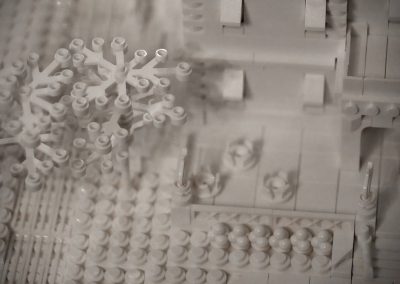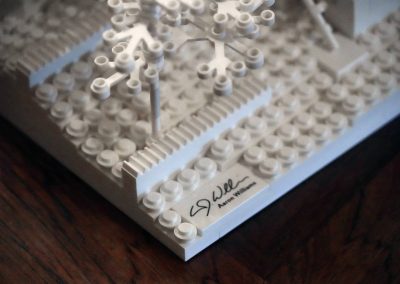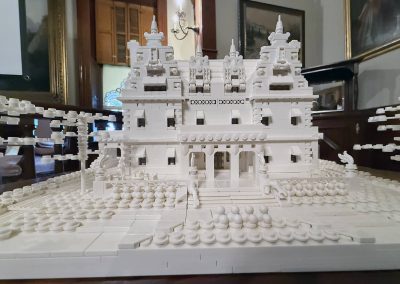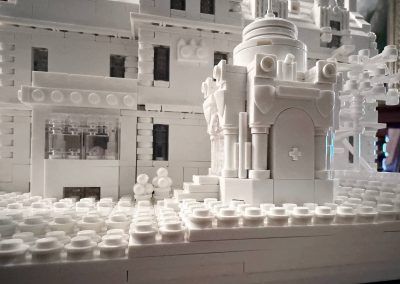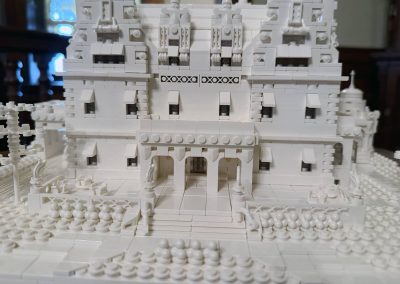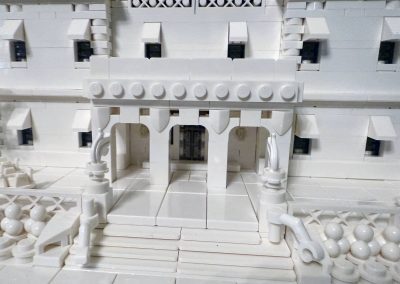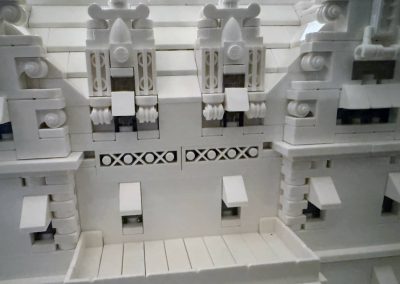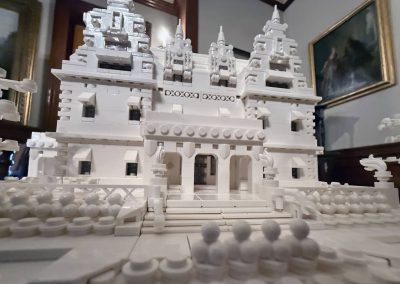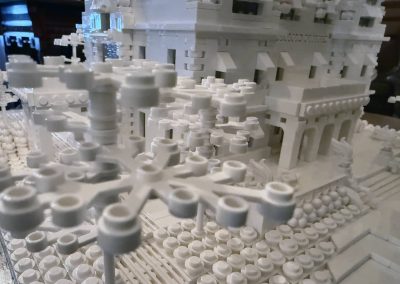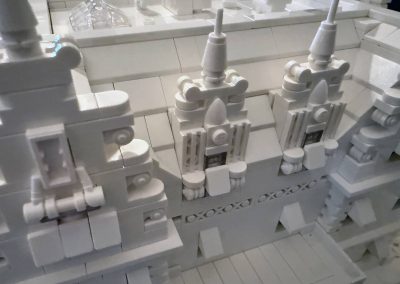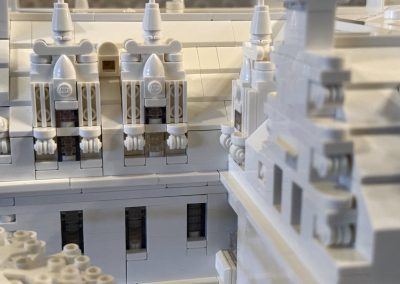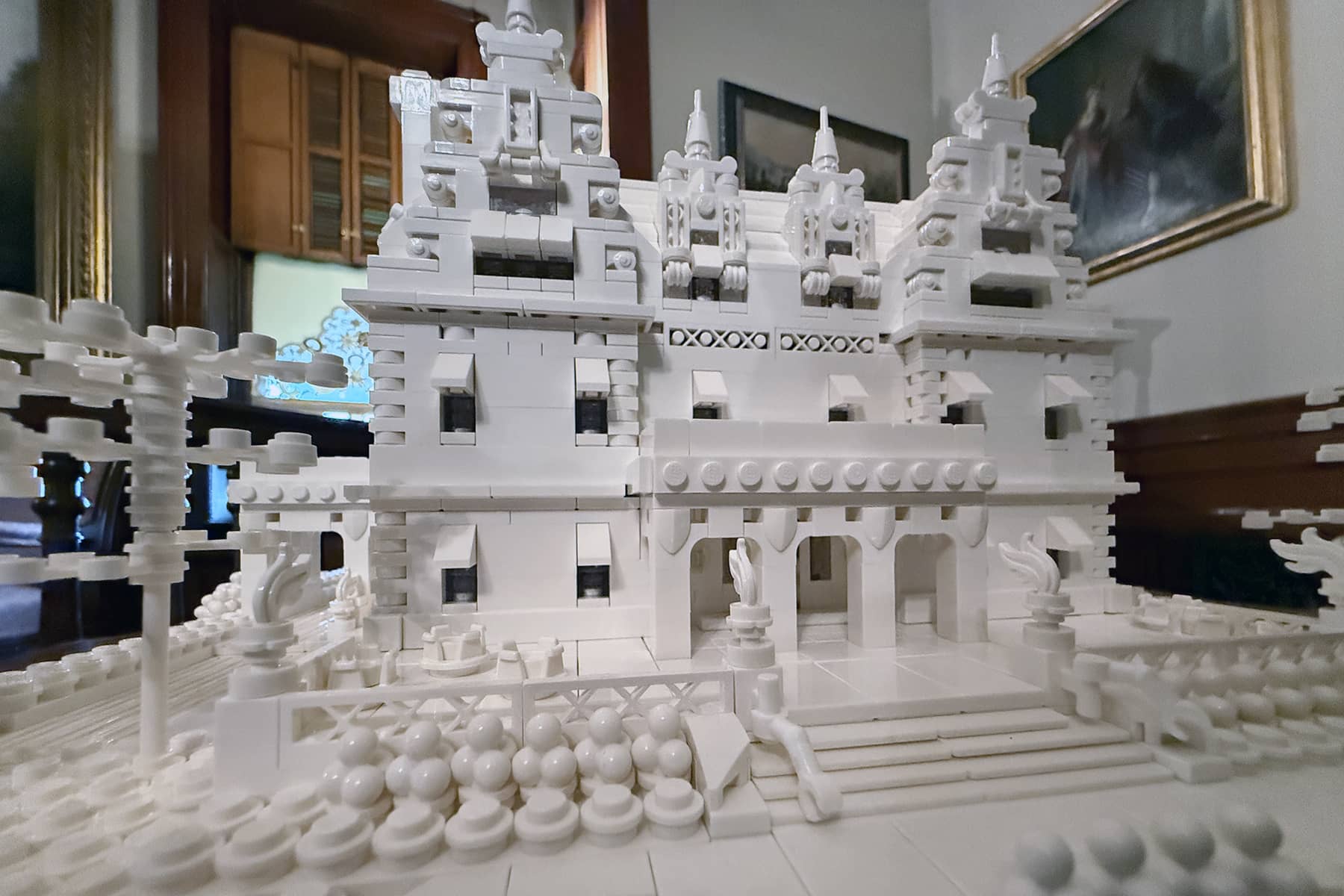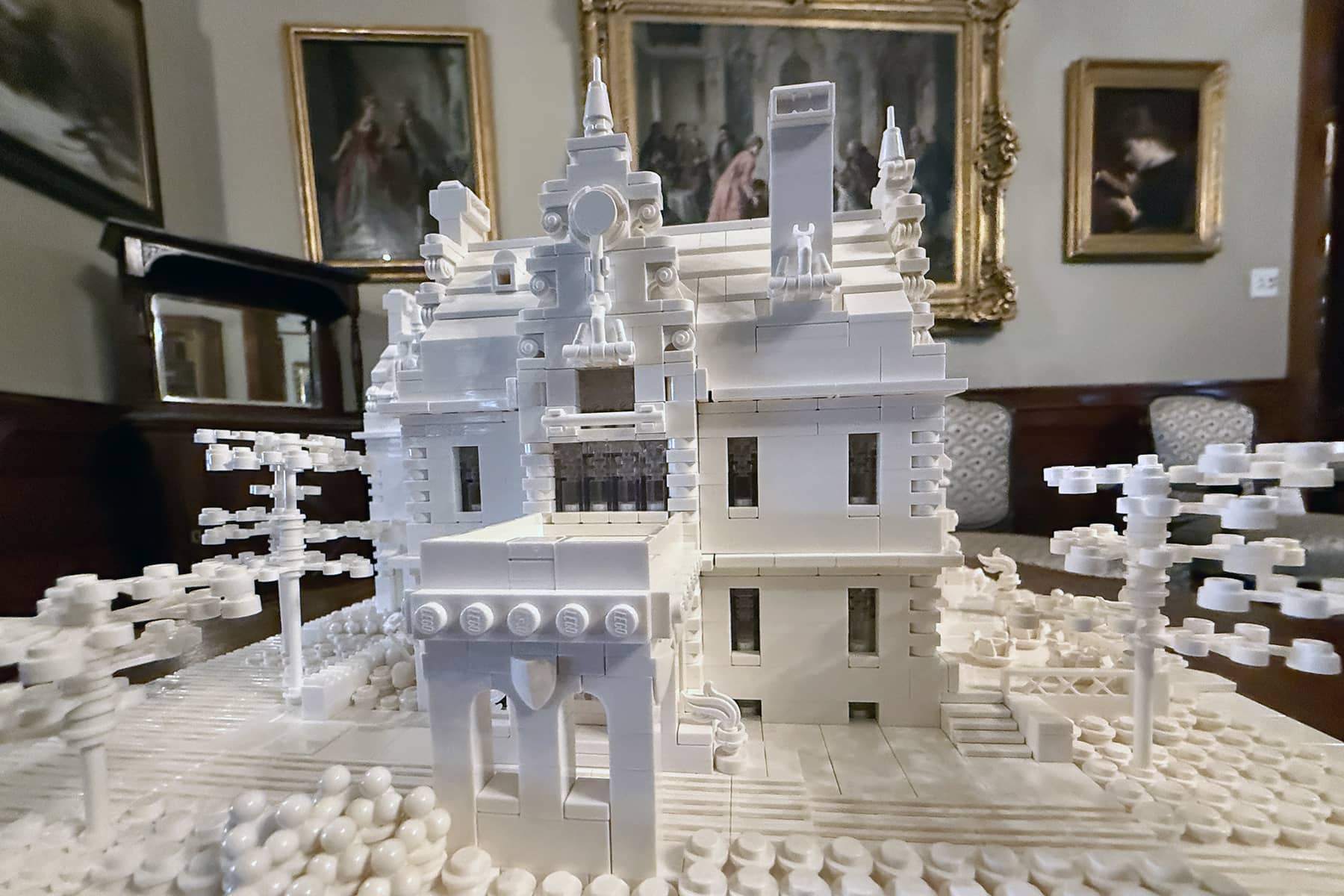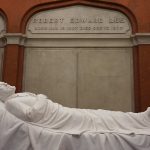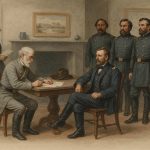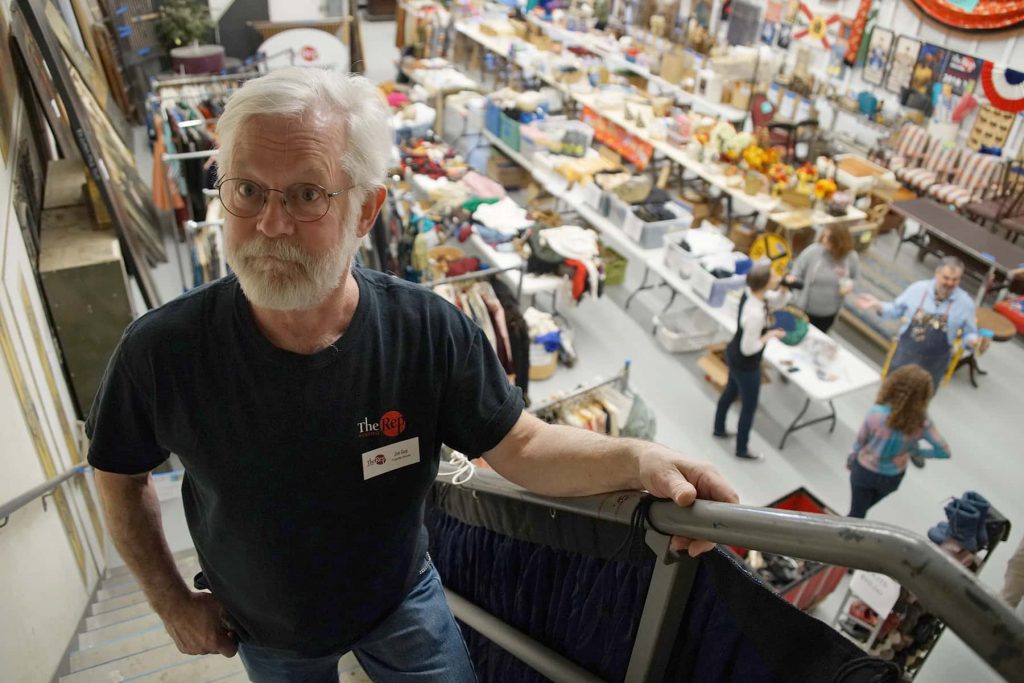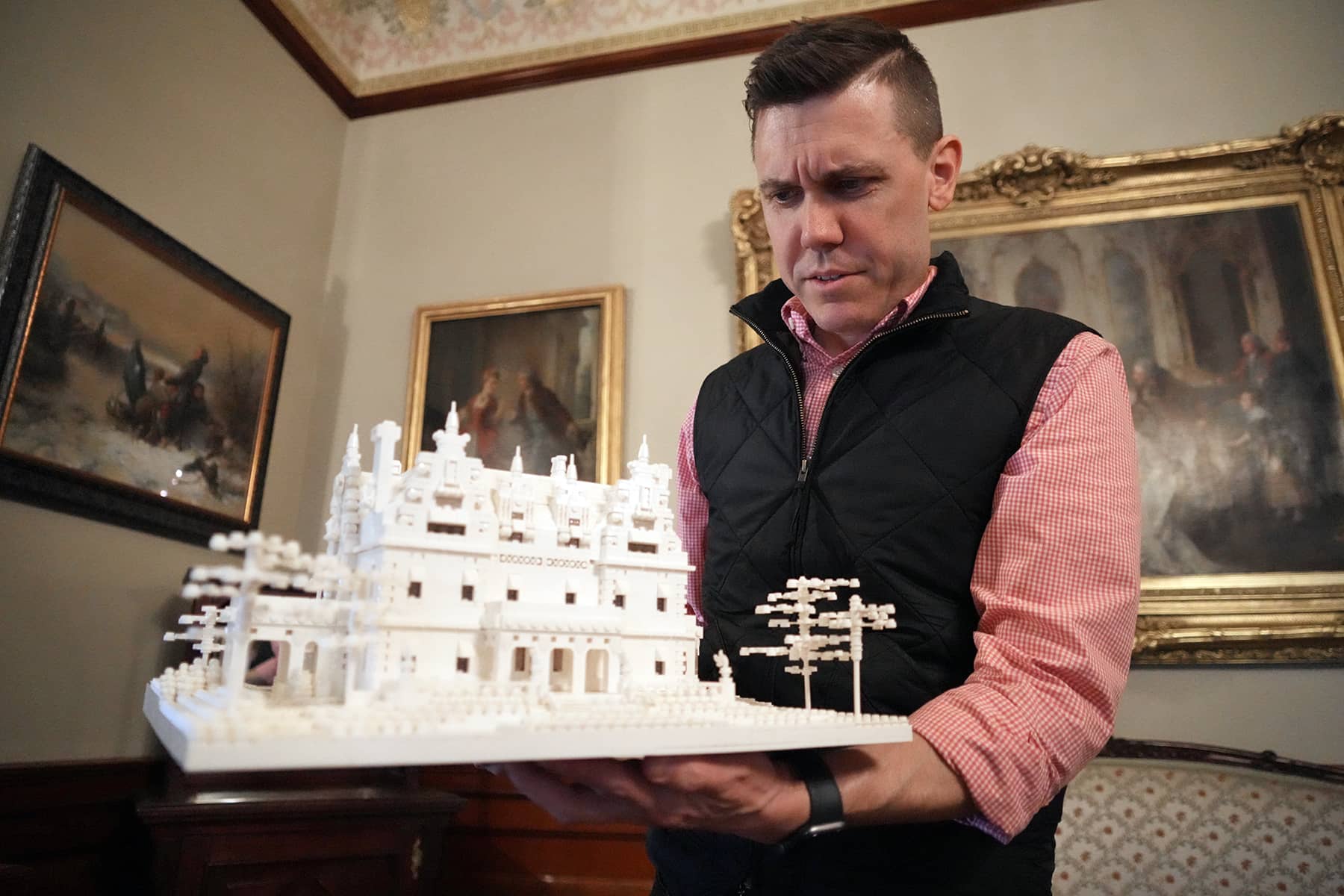
A white-brick Lego replica of Milwaukee’s historic Pabst Mansion was unveiled on April 10 as part of a new initiative to draw younger audiences to the 19th-century landmark and celebrate contemporary creativity alongside the mansion’s Gilded Age legacy.
The one-of-a-kind model was created by Madison-based landscape architect Aaron Williams, who presented the piece and spoke about its creation during a public lecture hosted on-site. It was built without digital assistance and composed of thousands of Lego bricks.
“This was a COVID hobby that just kept going,” said Williams in an interview with “Milwaukee Independent.”
He explained how he had not played with Lego since he was 12, but the pandemic lockdown gave him an opportunity to reconnect with the interlocking plastic bricks through his young twins. That impromptu project with his children evolved into a new kind of architectural expression.
“There’s totally a health and well-being component to Lego,” said Williams. “And for me, it’s amazing to start from nothing and create something. That’s pretty rewarding.”
Williams began building miniature Lego versions of neighborhood landmarks during the early days of the COVID lockdown, inspired by local spaces that had suddenly become inaccessible. He titled the series “Can’t Go, So We Build,” as a way to fill the time with his children for being unable to visit their favorite places on Monroe Street.
The project eventually became 29 buildings that resonated widely with the public, leading to features by local news and a growing audience on social media.
The commission to build the Pabst Mansion in Lego came through a referral network. Keith Stachowiak, an architect based in Milwaukee, recommended Williams to the Pabst Mansion staff who embraced the idea.
“All of our staff loves Legos,” said Krisenda Henderson, Public Programs and Facilities Manager for the Pabst Mansion. “We all have Lego sets, we all build Legos in our downtime, so we figured why not?”
The replica model will be placed in the mansion’s gift shop, protected within a permanent display case, with temporary relocations to the main exhibit area during seasonal events or lectures.
Henderson said the goal of the Lego collaboration was to offer a more accessible entry point into Milwaukee’s architectural heritage.
“Hopefully having it on display in our gift shop now will especially engage with our younger crowd, get kids excited for the mansion, and help them learn about the Pabst family in a different way,” she said.
The beauty of Lego for Henderson was that it could be taken apart again and again and something new could be created with all the elements, just not the Pabst Mansion model – she joked.
“I love Lego because it quiets my mind,” Henderson added. “It’s a way to just kind of sit down and be present with myself while I build something that is really rewarding. I can then display it in my own home. And if I get bored, I can take it apart and do it again. It is always something different, and not rigid. You don’t have to build a thing that Lego tells you you have to build.”
The Lego collaboration was months in the making. Williams constructed the mansion entirely by hand using only white and transparent bricks — a stylistic decision rooted in the monochromatic sculptures of Louise Nevelson.
“There’s this idea of emotional promise and that resonated with me,” said Williams. “And the idea of white as a color that edited down a structure to its most fundamental pieces — was sort of the impetus.”
The build took over 60 hours to complete over several months, with each brick representing a proportional yet non-standardized approach to scale.
Many Lego Master Builders use “brick studios” programs to create a 3D model of their ideas. The software then generates all the brick types in the amounts required for construction. But Williams did not use digital rendering tools or CAD-based layouts, he did it all by hand throug trial and error.
“The brick is the basic unit of measurement,” he said. “Not every piece comes in white, or is the correct scale. So it’s about translating what we see out in actuality to make it miniaturized.”
This minimalist, intuitive process also shaped the way Williams interpreted the Pabst Mansion’s famously ornate exterior. Working entirely from photographs, with no access to the site during construction, he relied on Google Earth imagery and photos taken by staff.
“Google imagery turned out to be helpful. It pixelated the Mansion down to rudimentary building blocks, and that low-fi quality was actually kind of good for this work,” said Williams.
The Lego effort reflects a broader strategy by Pabst Mansion, Inc. to expand its programming while preserving the historical integrity of the 1892 Flemish Renaissance Revival residence. Once the home of beer baron Captain Frederick Pabst, the mansion was nearly demolished in the 1970s before being saved by a preservation campaign and opened as a museum in 1978.
Originally built in 1892 at a cost of over $254,000, the equivalent of roughly $8 million today, the mansion was designed by renowned Milwaukee architects George Bowman Ferry and Alfred Charles Clas. It served as the Pabst family home until 1908, after which it became the official residence of the Archbishop of Milwaukee for nearly seven decades.
Now in its fifth decade as a historic house museum, the mansion regularly draws visitors for guided tours, seasonal exhibits, and educational lectures. With the new Lego installation, the staff hopes to extend that impact to younger generations and visitors less familiar with Milwaukee’s brewing and architectural past.
The charm of Lego is that it is an open-source building platform. Anyone can purchase the same raw materials and assemble them. To reproduce the Pabst Mansion in Lego, an enthusiast would need roughly 4,000 bricks, at a cost of around $600, extra free time, and some imagination.
Williams sourced the parts through independent online suppliers where specific pieces must be purchased individually. He sees his Lego interpretation not merely as a novelty, but as part of a continuum. By rendering the building in miniature, he hopes to draw people into a larger conversation about how they perceive their own cities, neighborhoods, and historical landmarks.
“One of the main things I keep saying in all my social media posts is that my intention is to enhance the experience of the everyday,” Williams added. “Be aware of the things that are around you. There’s all sorts of gems right in your backyard.”
That philosophy is central to both his Lego projects and the mission of the Pabst Mansion. With the physical structure being 133 years old, the tiny white bricks assembled by Williams now serve as a bridge between centuries, reinterpreting one of Milwaukee’s most ornate architectural spaces through the universal language of play.
“It lowers the intimidation of architecture and elevates the idea of a toy,” Williams said. “That’s why Lego resonates so well with people.”
© Photo
Lee Matz

